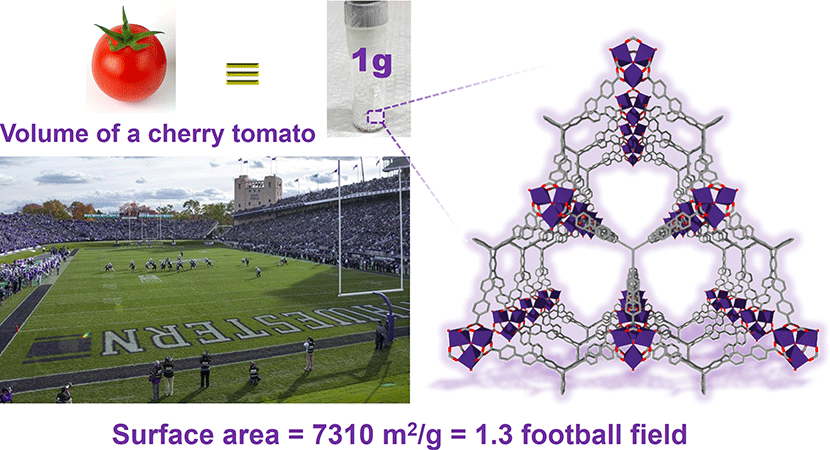Research Highlight: FARHA
Ultraporous Metal-Organic Frameworks (MOFs) for Clean Energy Storage
In 2017, petroleum-based transport vehicles overtook power plants as the largest source of greenhouse gas emissions in the US. This trend persisted in 2018 and 2019, and is projected to continue. Methane and hydrogen are both excellent candidates for cleaner energy fuels. While methane is considered a transition fuel (its combustion still emits CO2, but it is less than petrol), hydrogen is touted as being the fuel of the future because hydrogen-powered vehicles emit no greenhouse gases.
However, hydrogen and methane powered vehicles currently require high pressure compression (700 bar or 10,000 Psi for H2) to operate. This pressure is 300 times greater than the pressure in car tires. It is expensive to accomplish this task because of hydrogen’s low density and can be unsafe because it is also highly flammable. High-surface-area porous adsorbent materials such as metal-organic frameworks (MOFs) can store increased amounts of gas at lower pressures (e.g. 100 bar).
The Farha group is one of the leaders for the design and synthesis of such materials and recently developed a new ultraporous MOF, NU-1501, with an apparent BET surface area of 7310 m2 g-1. To put the surface area of the material in perspective, think of it this way: we can fit the area of 1.3 football fields into 1g of a sample with the volume of a cherry tomato. These MOFs are therefore able to store a large amount of hydrogen and methane at much safer pressures and at much lower costs. In addition, NU-1501 displays both gravimetric and volumetric storage performances for hydrogen and methane. NU-1501-Al surpasses the gravimetric methane storage DOE target (0.5 g g-1) with a 5−100 bar working capacity of 0.60 g g-1 (238 cm3 (STP) cm-3) at 270 K; and it also shows one of the best deliverable hydrogen capacities (14.0 wt%, 46.2 g L-1) under a combined temperature and pressure swing (77 K/100 bar →160 K/5 bar). These features make this MOF adsorbent a promising candidate for the storage and delivery of methane and hydrogen—clean energy carriers related to the carbon-neutral energy system. This work was recently reported in Science (2020, 368, 297-303).

